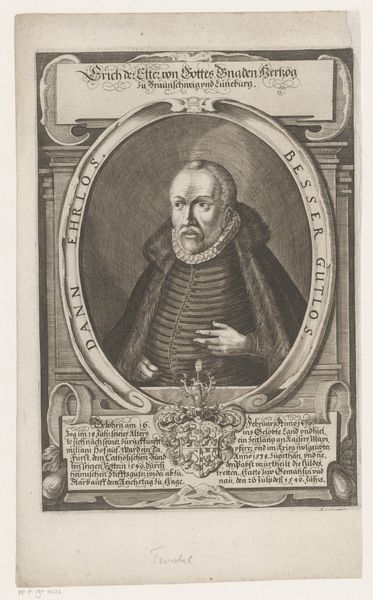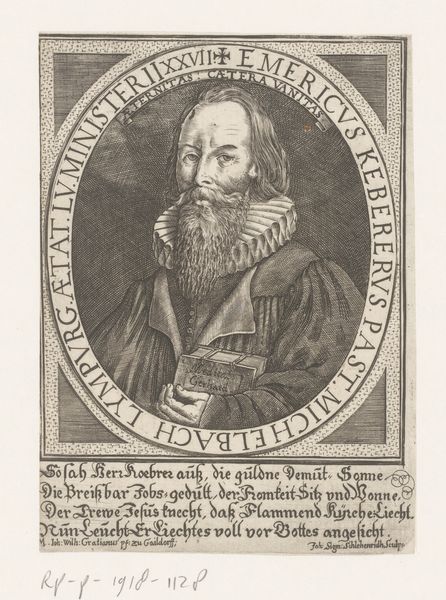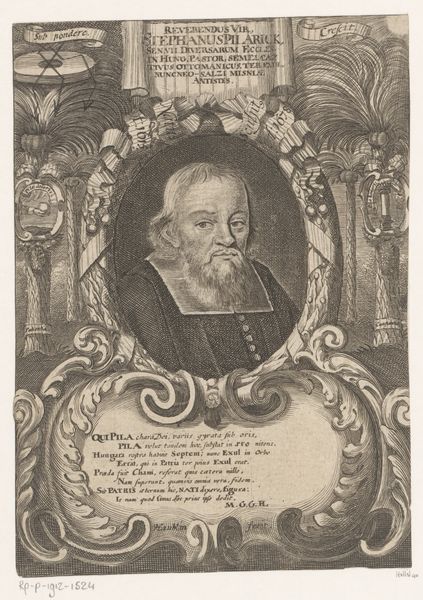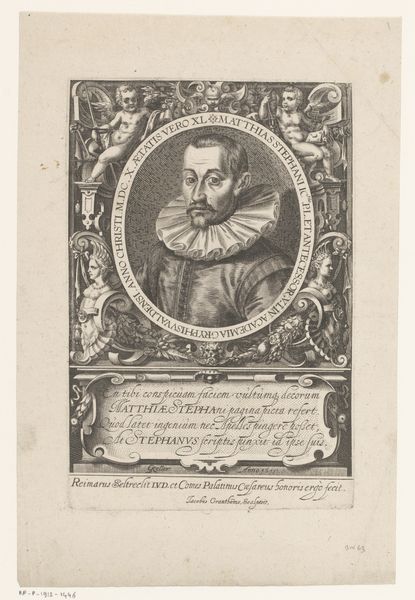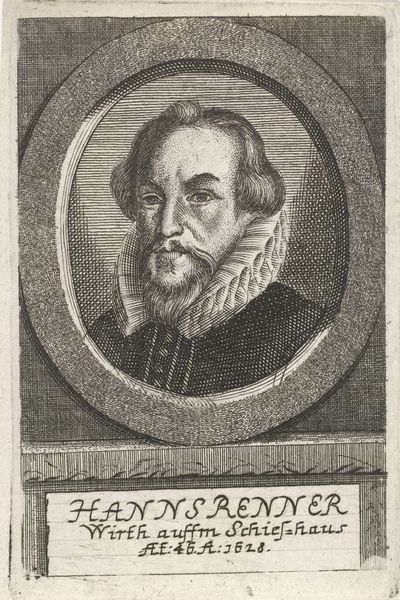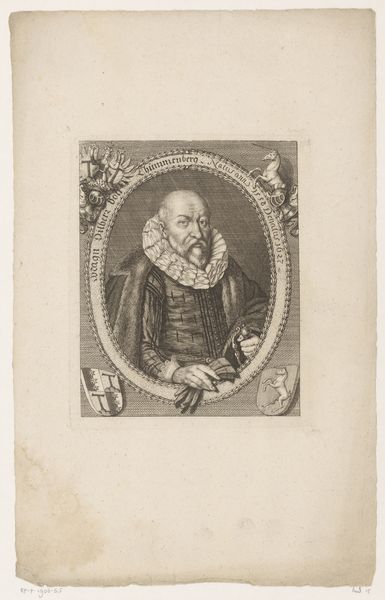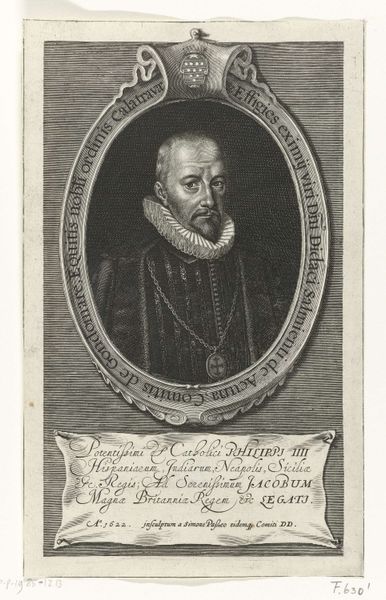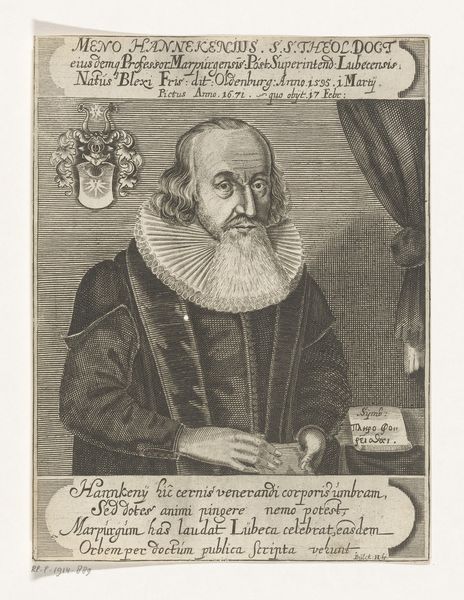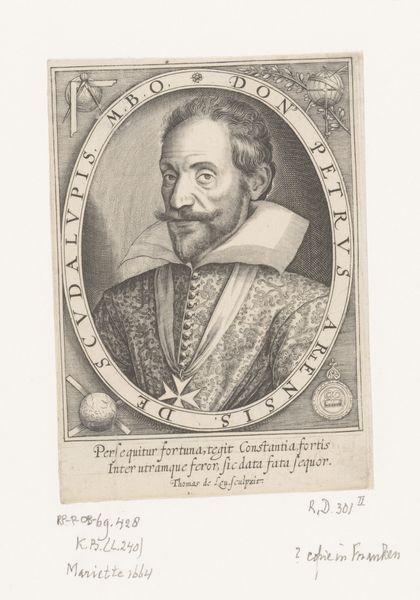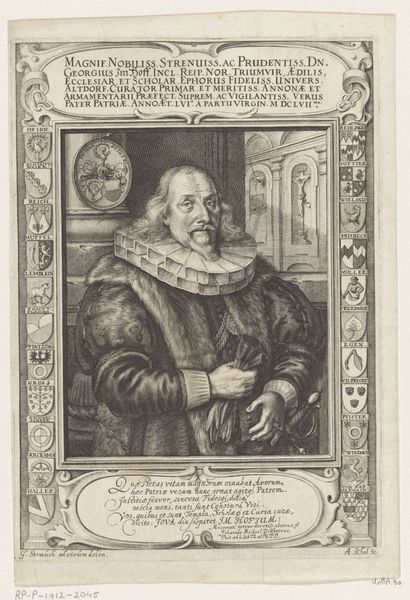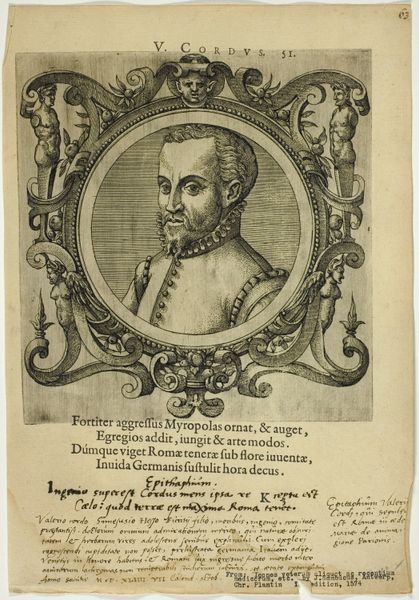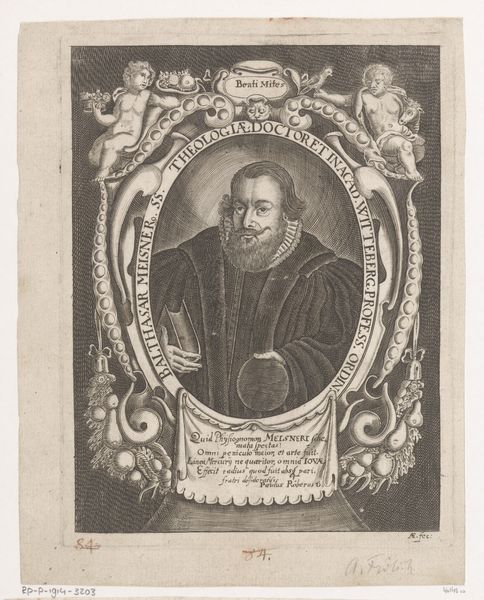
paper, engraving
#
portrait
#
baroque
#
old engraving style
#
paper
#
pencil drawing
#
19th century
#
history-painting
#
engraving
Dimensions: height 174 mm, width 123 mm
Copyright: Rijks Museum: Open Domain
Curator: This engraving from between 1626 and 1628 is titled "Portret van Giulio Jasolini" and was made by Hans Troschel on paper. It seems to capture the somber intensity of its sitter. Editor: The ruff! That stiff white collar screams high status but also… discomfort? I imagine Jasolini thinking, “Can someone get this thing off me?” But honestly, the intricacy of the surrounding embellishments, framing the rather severe portrait, gives it a delicious, theatrical flair. It's baroque drama at its best. Curator: And note how the materials used, engraving on paper, speak to print culture and wider distribution of imagery in the period. It’s fascinating how reproductive media like engraving elevated individuals by enabling circulation. Who this man was, what his role, it would become so widespread via these prints. Editor: It makes you wonder about the intention behind this. Is it a promotional piece? A commemoration? There's such a careful construction of status - you’ve got allegorical figures on either side of the portrait… plus the somewhat florid description at the bottom? What's being marketed? Brains? Piety? A cure for ruffs? Curator: Well, looking at the inscribed frame, we see it states "JULIUS IASOLINUS HIP. PHIL. MED. IN REGIO GYMNASIO NEAPOL. ANAT. ET CHIRURG. PROFESSOR.", marking Jasolinus as a Professor of Hip... something, Philosophy, Medicine, Anatomy and Surgery at the Royal Gymnasium of Naples, Editor: Oh, I see now. Not a cure for ruffs – a head full of knowledge! The setting - Gymnasium, anatomy theater - it is clear how that’s where Jasolinus is made. It seems Troschel, or at least this print, commemorates a scholar's place and the very fabric of education and discovery! And yet, for all its formality, I find the eyes... so searching. It really makes one wonder who the person behind the public facade was. Curator: Yes, that tension between public performance and individual presence seems key. I'd argue Troschel successfully navigated these aspects in the very process and distribution of his printed portrait. It reflects not just Jasolini, but the very systems of labor, science, and image-making intertwined at the time. Editor: It’s remarkable to see such grand ideas playing out in tiny lines etched on paper, the man literally enmeshed in academia. Looking at it again now I can really sense what that all means. Thanks for drawing my attention to that!
Comments
No comments
Be the first to comment and join the conversation on the ultimate creative platform.

